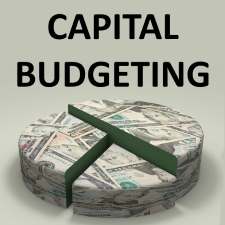Advantages and Disadvantages of Leasing
Table of Contents
- 1 Advantages or benefits of Leasing to lessee
- 1.1 1. 100 percent financing
- 1.2 2. Alternative use of funds
- 1.3 3. Cheaper sources of finance
- 1.4 4. Use and control over assets
- 1.5 5. Free from Restrictive covenants and conditions
- 1.6 6. Flexibility in structuring of rentals
- 1.7 7. Faster and simple documentation
- 1.8 8. Tax concession
- 1.9 9. No risk of obsolescence
- 2 Advantages or benefits of leasing to lessor
- 3 Limitations of Leasing
Advantages or benefits of Leasing to lessee
Lease financing gives the following advantages to the lessee.

1. 100 percent financing
Lease agreement finances assets which require huge investment. The lessee is able to avail of 100 percent financing without resorting to any immediate down payment. Thus, the lessee experiences no hurdles in commencing his business without making any initial investment.
2. Alternative use of funds
Leasing facilitates the acquisition of equipment, plant and machinery without the necessary capital outlay. So, the financial resources of the business may be spared for alternative use. Internal accruals from the exploitation of the leased equipment enhance the working capital position of the firm.
3. Cheaper sources of finance
l.easing costs less than other alternatives available. Moreover, leasing permits firms to acquire equipment without going through stringent formalities. So, lease financing is faster as well as cheaper.
4. Use and control over assets
Leasing involves divorce of ownership from the economic use of equipment. Though ownership of the property rests with ‘ the lessor, lessee has a full control over the leased equipment in his possession. The other modes of long-term finance for example, equity or debentures dilute the ownership of promoters of the business.
5. Free from Restrictive covenants and conditions
Lease finance is considered preferable to institutional finance. The lessee feels free from restrictive covenants and conditions such as representation on the board, conversion of debt into equity, payment of dividends so on. So, lease finance is not an invasion on the financial freedom of the lessee.
6. Flexibility in structuring of rentals
Lease rentals can be structured to accommodate the cash flow position of the lessee. The lessee is able to pay the lease rentals from the funds generated from operations. The lease period is also chosen to suit the lessee’s capacity to pay rentals. But in institutional finance repayment in earlier years is burdensome wherein the project may not actually generate cash flows sufficient to pay rentals.
7. Faster and simple documentation
A lease finance arrangement is free from cumbersome procedures. It involves faster and simple documentation. But in institutional finance, compliance of covenants and formalities and bulk documentation cause procedural delays in getting loans.
8. Tax concession
A lot of tax advantages can be derived by the lessee through suitably structured rental payments. In case of heavy taxation, rentals may be increased to lower taxable income. Rental payments are deductible from income. If the lessor is liable to tax, the rentals may be lowered. Less incomes attract less tax. The lessor can pass on a part of tax benefit to the lessee.
9. No risk of obsolescence
The lessor being the owner of the asset bears the risks of obsolescence. Further., the lessee at any time can replace the asset with latest technology.
Advantages or benefits of leasing to lessor
The following advantages are available to the lessor
1. Security: The lessor can repossess the leased equipment where the lessee defaults on payments. So, the lessor interest is fully secured.
2. Tax benefits: The lessor can claim tax relief by way of depreciation. Depreciation is deductible from income. Less tax is charged for less income. Moreover, the lessor in high tax bracket can lease out assets with high depreciation rates. Resultantly, he can reduce his tax liability.
3. Profitability: The lease rentals are received from the lessee. The lessor can cover the capital outlay and earn sufficient profit. The rate of return is more than what the lessor pays on his borrowings.
4. Capital Gearing: Trading on equity is possible for lessors. With low equity capital and substantial borrowings, lessors can earn high return on equity.
5. Growth Potential: The leasing industry has a high growth potential. Even during recession where lessees are hard pressed for funds, they can acquire equipment for business use. This ultimately maintains growth pace even during recessionary period
Limitations of Leasing
The drawbacks of lease financing are given below.
1. The lessee is not free to make additions or alterations to the leased equipment.
2. A financial lease entails a higher payout obligations. The lease is non cancellable. If the equipment is not suitable, the lessee will suffer. Cancellation of lease is possible only at a very heavy cost.
3. The lessee is not the owner of the leased asset He is thus deprived of the residual value of assets. He is not even entitled to any improvement done by him. On the expiry of the lease period, the leased equipment reverts to the lessor.
4. Serious consequences of default: It the lessee defaults in paying lease rentals, the consequences for him are far more serious. The lessor may terminate the lease and repossess the equipment. In case of finance lease, the lessee has to pay for damages and accelerated rental payments.
5. Leased assets do not figure in balance sheet. So there is an effective understatement of assets value. However, leased assets are disclosed by way of footnote to the balance sheet
6. Lease financing costs more than debt financing.
7. Benefits of appreciation in the value of real assets like land and buildings are not available to lessee.


